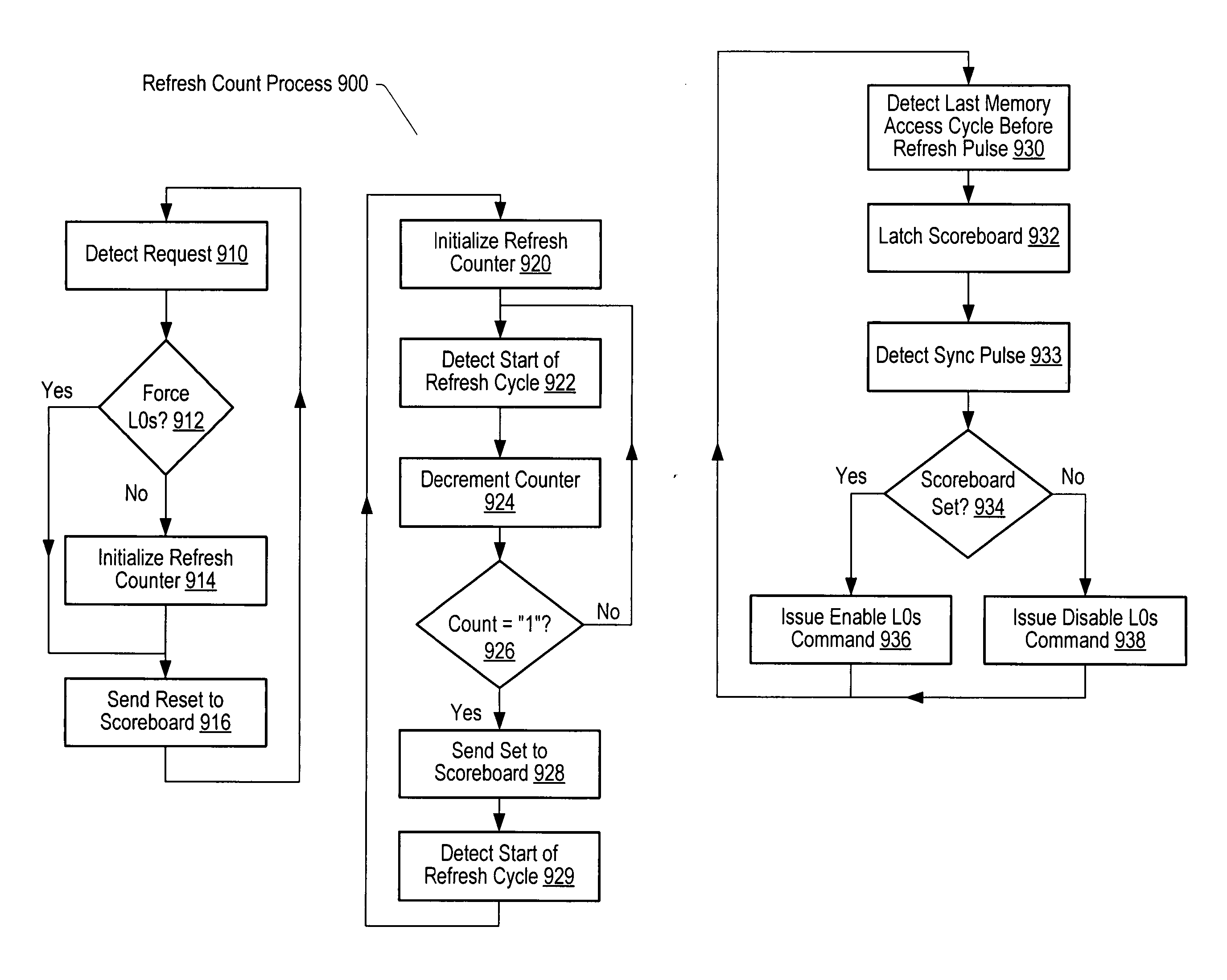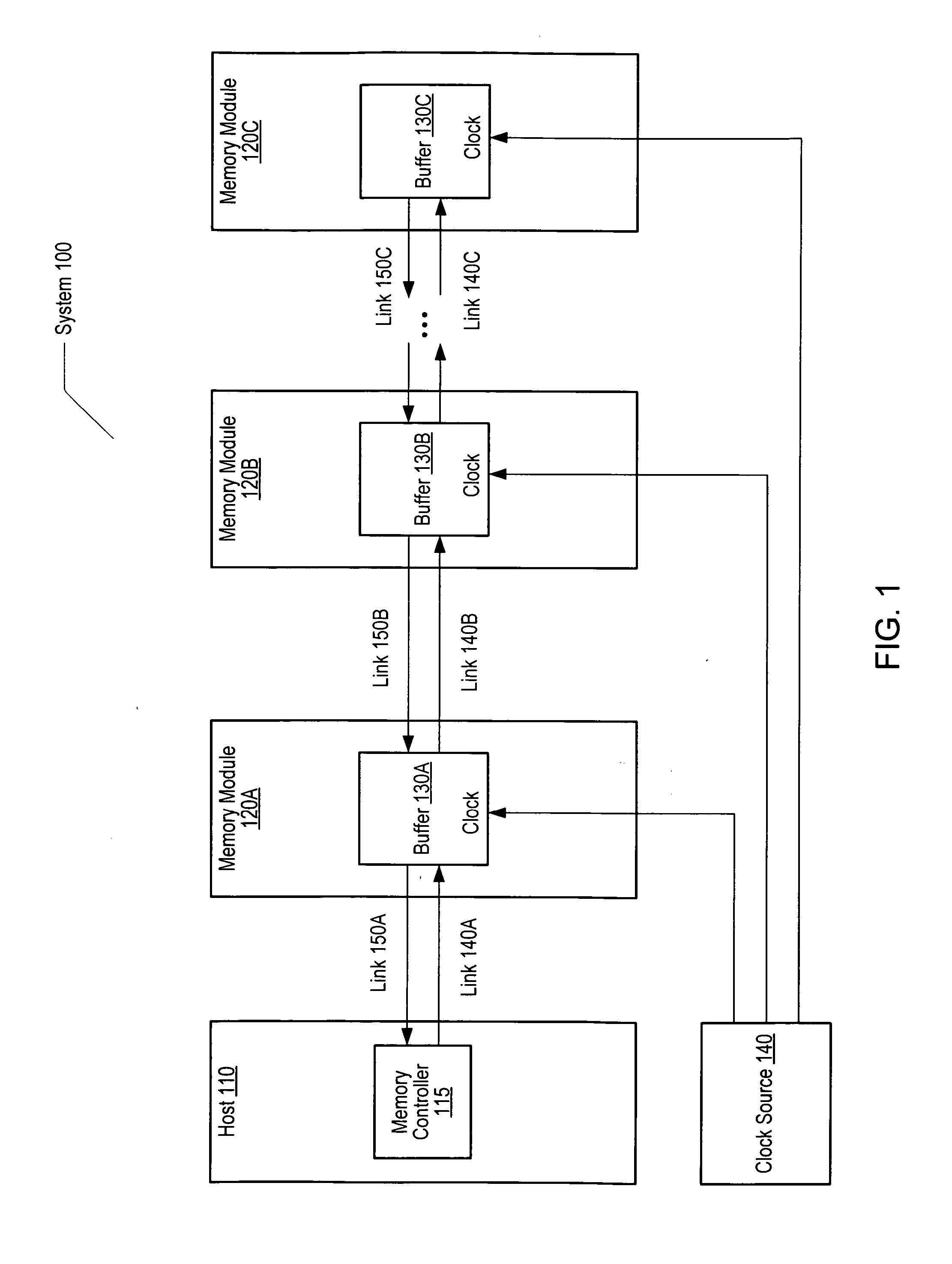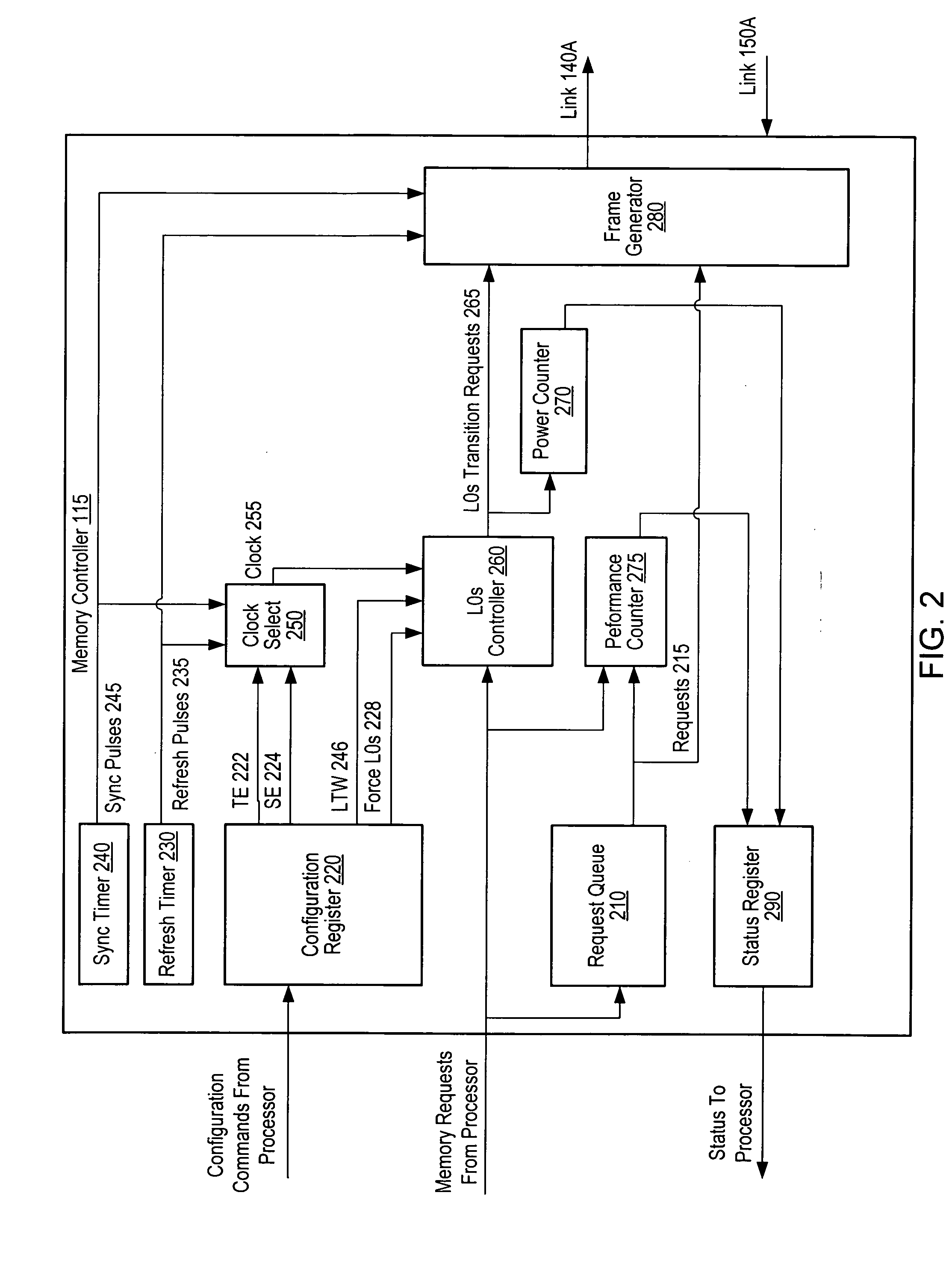Power throttling in a memory system
a memory system and power throttling technology, applied in the direction of memory adressing/allocation/relocation, instruments, liquid/fluent solid measurement, etc., can solve the problems of increasing the power consumption of the memory system, and increasing the electrical load of the parallel data and address bus
- Summary
- Abstract
- Description
- Claims
- Application Information
AI Technical Summary
Benefits of technology
Problems solved by technology
Method used
Image
Examples
Embodiment Construction
[0024]FIG. 1 is a generalized block diagram of one embodiment of a computer memory system 100 including a host 110, one or more memory modules 120A-120C, and a clock source 140. In the discussions that follow, elements designated by a number followed by a letter may be referred to collectively using the number alone. For example, memory modules 120A-120C may be referred to collectively as memory modules 120. In the illustrated embodiment, host 110 may be a processor that includes a memory controller 115. In an alternative embodiment, a processor and a memory controller may be separate elements of host 110.
[0025] In one embodiment, each of memory modules 120 may be a fully buffered dual inline memory module (FB-DIMM) that includes a respective buffer 130A-130C. Each of buffers 130 may provide an interface between an array of DRAM devices and other FB-DIMMs or host 110 within system 100. The JEDEC Solid State Technology Association has published a draft specification for FB-DIMMs. Th...
PUM
 Login to View More
Login to View More Abstract
Description
Claims
Application Information
 Login to View More
Login to View More - R&D
- Intellectual Property
- Life Sciences
- Materials
- Tech Scout
- Unparalleled Data Quality
- Higher Quality Content
- 60% Fewer Hallucinations
Browse by: Latest US Patents, China's latest patents, Technical Efficacy Thesaurus, Application Domain, Technology Topic, Popular Technical Reports.
© 2025 PatSnap. All rights reserved.Legal|Privacy policy|Modern Slavery Act Transparency Statement|Sitemap|About US| Contact US: help@patsnap.com



